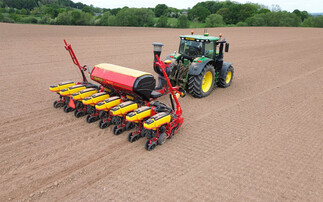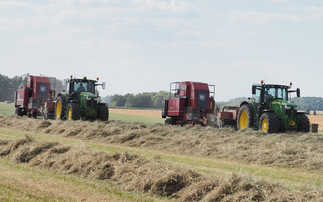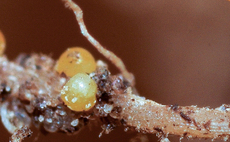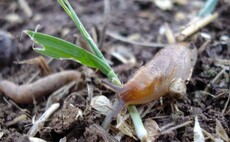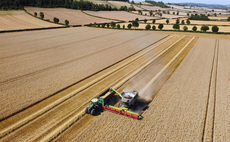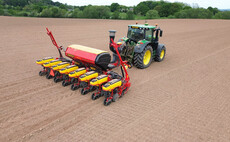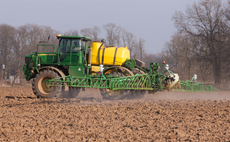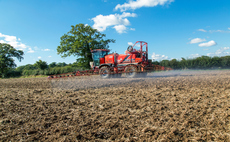
Spending just a few minutes checking over a farm's sprayer before moving into oilseed rape crops (OSR) will be time well spent, suggests John Wooding, technical sales manager at Knight Farm Machinery.
He says: "While the OSR area has dropped back, it is still a significant UK break crop and desiccation remains the most common way of speeding up plant ripening to match seed maturity."
When considering desiccation timing, he says to select an area of the crop with a representative growth stage of the whole field. Within that area, select a canopy area which is typical of the maturity of the majority of the crop. This may be pods in the middle of the main raceme or on side branches depending on the canopy. Randomly pick a total of 20 pods; if in at least 15 of these pods, two-thirds of the seed has changed colour from green to brown consider commencing desiccation within four to seven days, he says.
"Check you are using the most appropriate nozzles for the job and apply at a rate suitable for the product and the density of the crop. Once in the field, check the boom height is right for the crop, low enough for effective uniform application penetration but with sufficient clearance to guard against crop or sprayer damage."
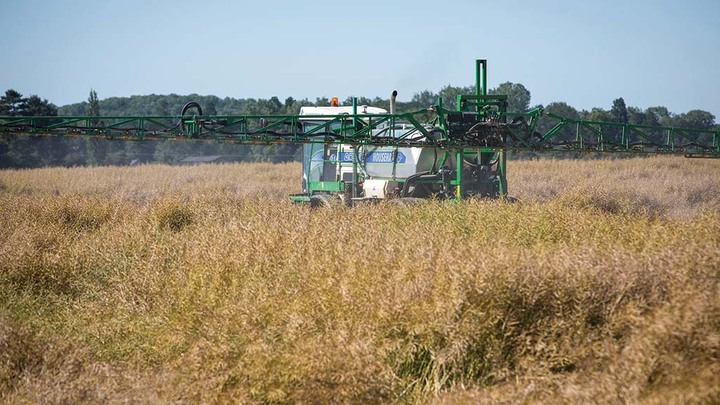
Recommended water volume rates often sit around 200 litres/hectare, but always check product labels and mixing recommendations. Fine to medium nozzles are often recommended with higher water volumes to gain better plant coverage on application. A number of medium 03-type air induction nozzles are on the market including Guardian AIR and Guardian AIR twin nozzles. The twin nozzle provides a multiple-directional application into the canopy.
Mr Wooding says: "Ensure your machine is well-prepared, check pressures tyre pressures on the tractor as well as the sprayer if you are using a trailed machine. If you are not using a GPS-based rate controller, also ensure your sprayer is calibrated correctly according to the wheels fitted. Make sure belly sheets are in good condition and securely fitted."
"Make sure any tines fitted to the boom to prevent ends touching the ground earlier in the season are removed so crop does not snag on them. We [Knight Farm Machinery] repair multiple sections each year damaged this way."
"Once work is done, ensure all plant material and residue is cleaned off in the field, the sprayer is washed externally, and that internal sprayer cleaning is thorough, adding a suitable cleaning product at the recommended rate to a tank of clean water. This will ensure no desiccant remains, and also help keep sight gauges clear, as these can become clouded if pod sealant has been used."
High temperatures and water pH can affect glyphosate efficacy. If unsure what water pH you have, indicator paper pH test kits can be bought online and are a quick and affordable way of testing water pH pre-application. Glyphosate has optimal performance in slightly acidic water at about pH 5.0. Incorporating an acidifying water conditioner such as citric acid into the tank mix will help improve product efficacy by reducing the pH of alkaline water. Optimal application timings are often early morning and late evening when daytime temperatures are cooler. High daytime temperatures cause the plant to shut down reducing the plant's ability to uptake the herbicide.
Nozzle maintenance
- Jug test to measure flow rates; replace all nozzles on a boom if the flow rate exceeds the manufacturer's values by more than 10 per cent
- Visually check nozzle mounting for leaks or any damage
- Check all nozzles on the boom are the same size, type and angle
- Visually inspect nozzle spray patterns, replace any with damaged or incomplete patterns
- Clean and unblock any blocked or partially blocked nozzles using a brush
- Replace nozzles that cannot be cleaned or cleared








